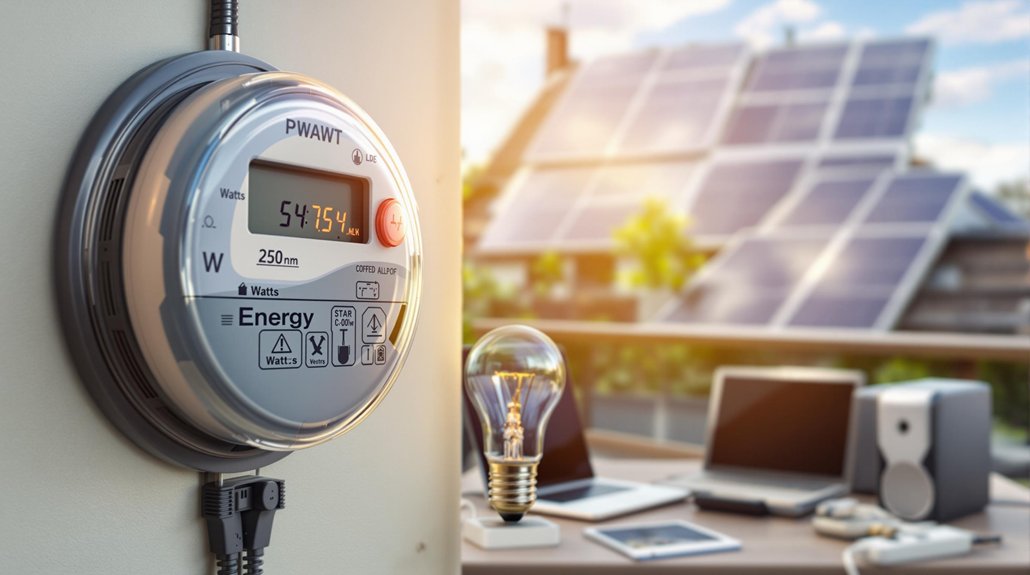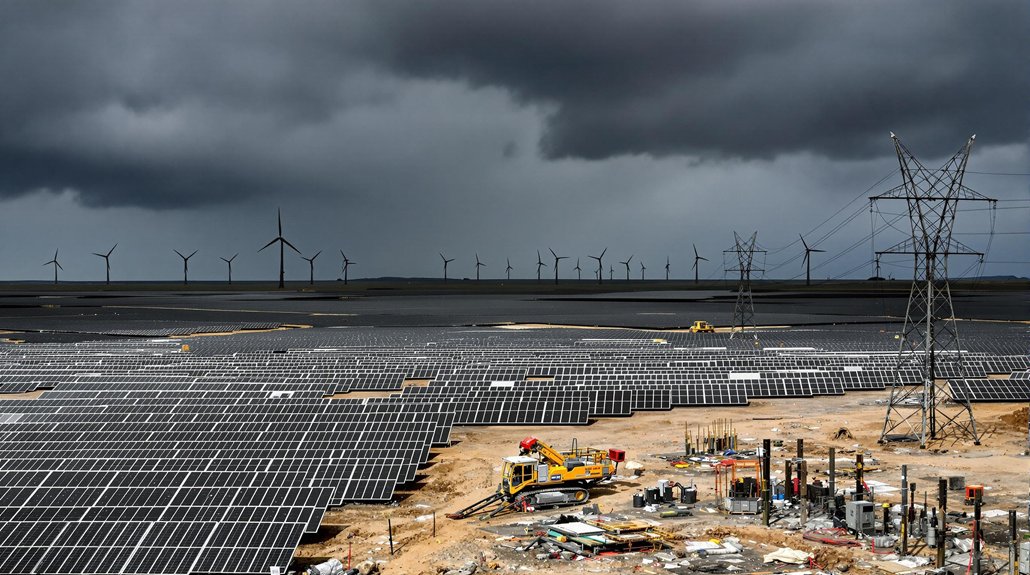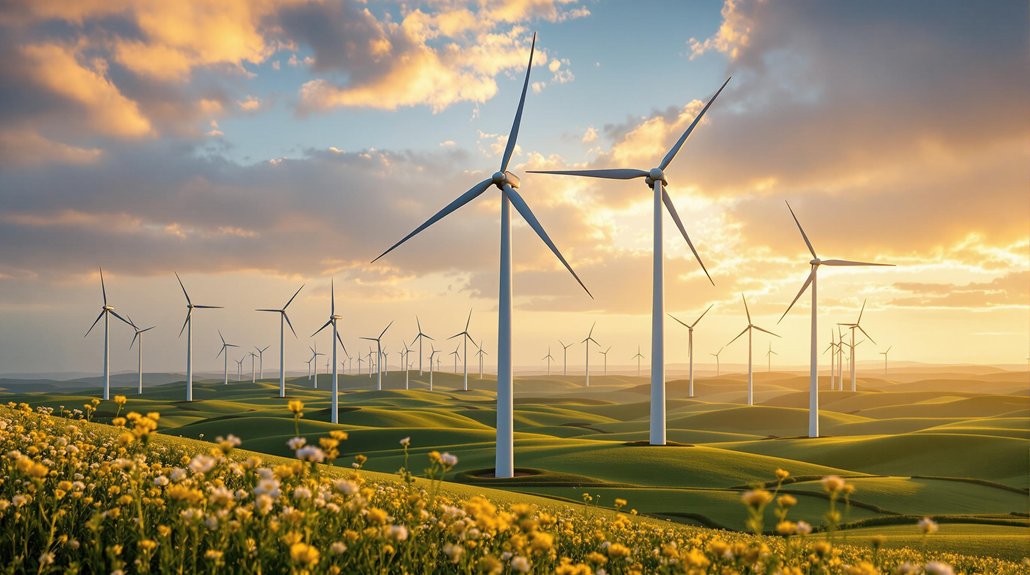Watts measure how fast energy is used or transferred. The unit equals one joule of energy per second and was named after inventor James Watt. In homes, light bulbs use 40-100 watts, while air conditioners need 3,000-5,000 watts. The calculation is simple: watts = voltage × current. Energy-efficient appliances like LED bulbs consume fewer watts for the same function. Understanding this concept opens doors to better energy management.

Power surrounds us in everyday life, from the hum of refrigerators to the glow of light bulbs. Behind these everyday functions is a unit called the watt, named after Scottish inventor James Watt. The watt is the standard unit of power in the International System of Units (SI) and measures how quickly energy is being used or transferred.
The watt silently powers our modern existence, measuring energy’s flow through the devices we depend upon daily.
A watt equals one joule of energy per second. This relationship shows that power is simply energy divided by time. When we use electricity for an hour, we’re often billed in kilowatt-hours (kWh), which equals 1,000 watts used continuously for one hour.
Common household items use varying amounts of power. Light bulbs range from 40 to 100 watts, while microwave ovens use 600 to 1,200 watts. Desktop computers consume between 100 and 450 watts, and electric kettles need 1,500 to 3,000 watts. Central air conditioning systems require considerable power, using 3,000 to 5,000 watts.
The watt connects to other power units through simple conversions. One horsepower equals 745.7 watts. Larger amounts of power are measured in kilowatts (1,000 watts) or megawatts (1,000,000 watts). For quick calculations between different units, many professionals rely on power conversion calculators. This flexibility makes watts useful across many technical fields.
In electrical circuits, wattage is calculated by multiplying voltage by current (W = V × A). This formula helps electricians and engineers design safe, effective electrical systems. Higher wattage ratings generally mean more power consumption.
Renewable energy sources are also rated in watts. Residential solar panels typically produce 250 to 400 watts at peak output. Wind turbines range from small 400-watt models to massive 5-megawatt installations used in commercial wind farms. Battery storage systems help manage this power by storing excess energy for use during peak demand periods or when renewable generation is unavailable.
Energy efficiency is often measured by how few watts a device needs to perform its function. LED bulbs demonstrate this principle well—they produce the same brightness as incandescent bulbs while using considerably less power. It’s important to note that wattage does not directly indicate a light bulb’s brightness, as brightness in lumens is the actual measure of light output.
Many Energy Star appliances achieve their ratings by operating at lower wattages than standard models, showing that modern technology can do more with less power.
Frequently Asked Questions
How Do Watts Relate to My Electricity Bill?
Watts directly impact electricity bills by measuring how much power appliances use.
Electricity companies charge by kilowatt-hours (kWh) – the number of watts used over time. Higher-wattage devices like air conditioners consume more electricity than lower-wattage ones like light bulbs.
A 1,000-watt appliance running for one hour equals 1 kWh. Customers can check their bills to see their total kWh usage and rate.
Can High Wattage Devices Damage Home Electrical Systems?
High-wattage devices can indeed damage home electrical systems. When too many power-hungry appliances run at once, they may overload circuits, causing overheating and potential fires.
Signs of trouble include flickering lights, warm outlets, and frequent circuit breaker trips. Older homes are especially vulnerable as their wiring wasn’t designed for modern appliances.
Electrical panels and wiring can degrade over time from repeated strain from devices like dryers and air conditioners.
Why Do Batteries List Volts Instead of Watts?
Batteries list volts instead of watts because voltage is a fixed characteristic based on the battery’s chemistry.
Unlike watts, which change depending on the device’s power needs, voltage remains constant. Volts indicate compatibility with specific devices.
Batteries also list amp-hours (Ah) for capacity. Together, these measurements help consumers select the right battery.
Watts can be calculated by multiplying volts by amps when needed.
How Do Watts Differ in AC Versus DC Systems?
In DC systems, watts remain constant when voltage and current don’t change. The calculation is straightforward: watts = volts × amps.
In AC systems, power fluctuates as voltage and current change in sine waves. AC watts include both real power (actual work) and apparent power (total power).
The power factor shows how efficiently electricity is being used.
Despite these differences, one watt represents the same amount of power in both systems.
What’s the Relationship Between Watts and Heat Production?
Watts directly correlate to heat production. One watt produces about 10°C of heat in free air. This relationship follows Joule’s law, where power equals current squared times resistance.
All electrical devices convert some energy to heat through resistance. Higher wattage means more heat generated. Electronics with poor efficiency produce more waste heat.
That’s why computers and other high-power devices need cooling systems to prevent overheating.









